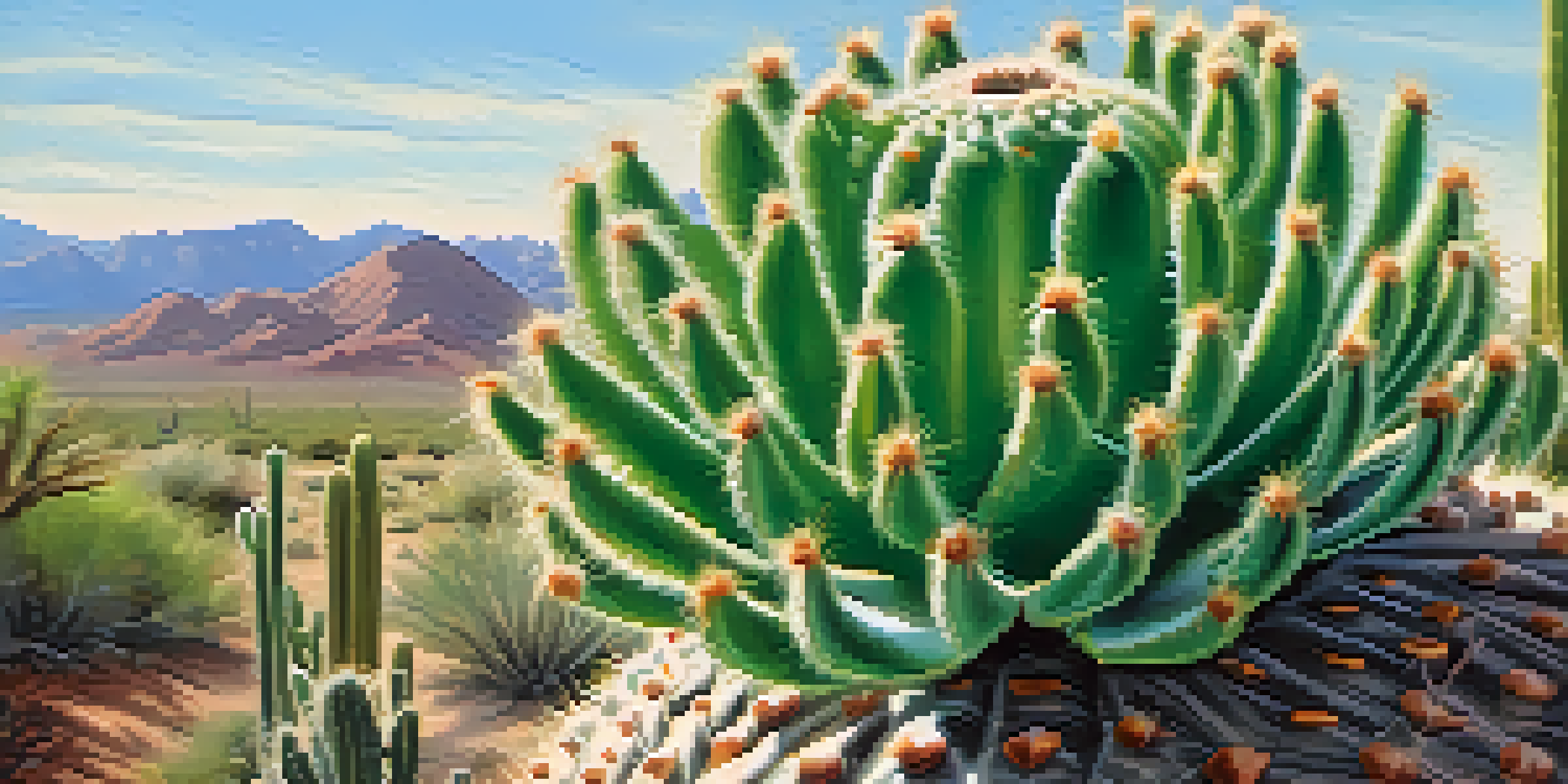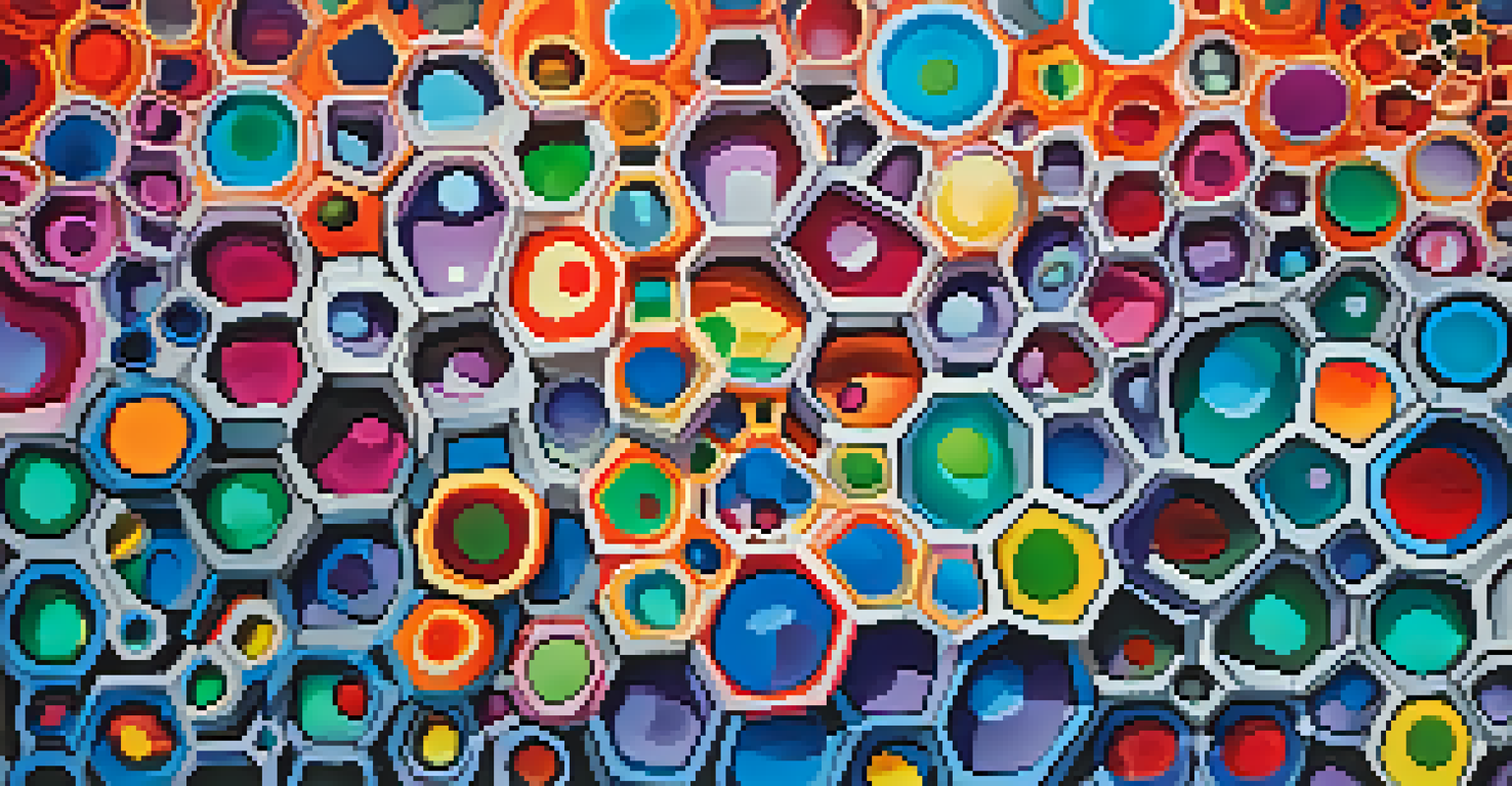The Science Behind Peyote: Chemical Compounds Explained

Introduction to Peyote and Its Historical Significance
Peyote, a small cactus native to Mexico and the southwestern United States, has been used for thousands of years in Native American spiritual practices. Its use is deeply rooted in cultural traditions, often associated with healing and vision quests. The active component, mescaline, is what gives peyote its psychoactive properties, allowing users to experience altered states of consciousness.
The use of peyote in Native American spiritual practices is a journey into the depths of the mind and the richness of the soul.
Historically, peyote has played a significant role in various spiritual ceremonies, providing a connection to the divine for many indigenous tribes. Its importance is not just limited to spirituality; it has also been a subject of scientific research aimed at understanding its effects on the human brain and body. As more people seek out natural substances for mental health and spiritual growth, peyote remains a focal point of both reverence and curiosity.
Understanding the science behind peyote is essential in appreciating its place in culture and medicine. By exploring its chemical compounds, we can demystify how this cactus influences human perception and consciousness, making it a fascinating topic for both scientists and enthusiasts alike.
The Key Chemical: Mescaline and Its Role
Mescaline is the primary psychoactive compound found in peyote, and it is responsible for the intense visual and auditory hallucinations often reported by users. Structurally, it is an alkaloid, which means it contains nitrogen and has a significant impact on the nervous system. When ingested, mescaline interacts with serotonin receptors in the brain, altering mood and perception.

In simple terms, mescaline can be thought of as a key that unlocks different doors in the mind, allowing users to experience reality in a new and often enlightening way. Many describe their experiences under its influence as profound and transformative, often leading to deeper self-reflection and insights. This has piqued the interest of researchers looking to understand its therapeutic potential.
Peyote's Cultural and Spiritual Roots
Peyote has been used for thousands of years in Native American spiritual practices, deeply intertwined with cultural traditions and healing.
Studies have suggested that mescaline may have applications in treating conditions like depression and anxiety. By researching its effects, scientists hope to harness its benefits while respecting the cultural significance it holds for indigenous peoples.
Other Chemical Compounds Found in Peyote
While mescaline takes the spotlight, peyote contains several other chemical compounds that contribute to its effects. These include various alkaloids like peyotine, anhalonine, and various fatty acids. Each of these compounds can interact with the body in unique ways, potentially enhancing or altering the overall experience of consuming peyote.
Psychedelics can help us confront our most difficult problems and find a path to healing and growth.
For instance, peyotine has been shown to have sedative effects, which may balance the stimulating effects of mescaline. This interplay of chemicals can create a more rounded experience for users, combining both stimulation and relaxation. Understanding these compounds gives us a fuller picture of how peyote works and why it may be effective for certain individuals.
Thus, the chemistry of peyote is a complex tapestry of compounds that together create its unique effects. By studying these components, scientists are not only uncovering the secrets of peyote but also opening doors to new avenues of research in pharmacology and mental health.
How Peyote Affects the Brain and Body
When peyote is consumed, mescaline travels through the bloodstream and reaches the brain, where it binds to serotonin receptors. This interaction leads to changes in mood, perception, and cognition, often resulting in vivid visual and auditory hallucinations. Users might experience alterations in their sense of time and space, as well as deep emotional insights.
The effects of peyote can vary widely from person to person, influenced by factors like dosage, individual physiology, and setting. Some may find the experience enlightening and spiritual, while others might encounter anxiety or discomfort. Understanding these variances is crucial for anyone considering using peyote for personal exploration or therapeutic purposes.
Mescaline's Impact on Perception
Mescaline, the primary psychoactive compound in peyote, alters mood and perception, leading to profound experiences and insights.
Moreover, the physical effects of peyote can include increased heart rate and changes in blood pressure, which are important to consider for those with underlying health issues. This underscores the need for responsible use and an awareness of one's own health when exploring the effects of peyote.
Potential Therapeutic Uses of Peyote
Recent research has suggested that peyote and its active compounds may have therapeutic potential, particularly in the treatment of mental health disorders. Some studies indicate that mescaline can lead to increased emotional openness and introspection, which might help individuals process trauma and enhance overall well-being. This has led to a growing interest in psychedelic therapy as a viable alternative to traditional treatments.
In controlled settings, peyote has been reported to help individuals cope with addiction, anxiety, and depression. The introspective nature of the experiences it induces may allow users to confront underlying issues and foster personal growth. As such, peyote is being examined as a possible tool for healing in clinical environments.
However, it’s essential to approach this topic with caution. While the potential benefits are promising, more research is needed to fully understand the risks and long-term effects of peyote use. Ethical considerations surrounding its use in therapy also highlight the importance of respecting indigenous practices and knowledge.
Legal Status and Cultural Considerations
The legal status of peyote is complex and varies by region. In the United States, peyote is classified as a Schedule I controlled substance, making it illegal to possess or use outside of specific religious contexts, particularly for members of the Native American Church. This legal framework aims to protect the cultural and spiritual practices associated with peyote while preventing misuse.
In contrast, some countries have more relaxed regulations regarding peyote, recognizing its cultural significance. However, the dichotomy of legality raises important questions about access, respect, and the rights of indigenous peoples to use peyote in their traditions. As interest in natural psychedelics grows, these discussions become increasingly relevant.
Therapeutic Potential of Peyote
Recent research suggests that peyote may aid in treating mental health disorders, offering a new perspective on psychedelic therapy.
Navigating the legal landscape surrounding peyote requires sensitivity to both its cultural roots and current scientific research. Understanding the implications of its use involves balancing the rights of indigenous communities with the evolving perspectives on psychedelics in modern medicine.
Conclusion: The Fascination with Peyote Continues
The science behind peyote is a captivating exploration of chemistry, culture, and consciousness. As we delve deeper into its chemical compounds and their effects on the brain and body, we uncover not only the mechanics of this ancient cactus but also its potential for healing and personal transformation. The interplay of tradition and modern science creates a rich dialogue that continues to evolve.
While mescaline takes center stage, the supporting cast of compounds in peyote adds depth to our understanding of its effects. As interest in psychedelics continues to surge, so too does the need for responsible use and thorough research. Respecting cultural traditions while exploring new therapeutic avenues is crucial in navigating the future of peyote.

Ultimately, peyote remains a symbol of curiosity and reverence, bridging the gap between ancient wisdom and contemporary inquiry. As we continue to study its properties, we may unlock even more secrets about ourselves and the nature of consciousness.